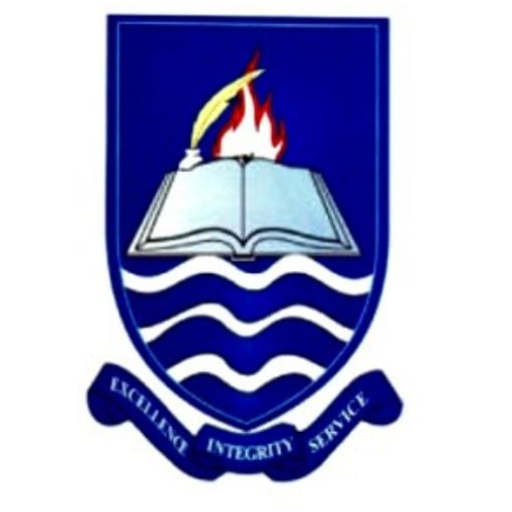Addressing Students’ Difficulties in Electric Circuit Analysis Using the Modified Laboratory Problem-Solving Model
DOI:
https://doi.org/10.63561/fnas-jmse.v6i4.914Keywords:
Laboratory, Electric Circuit, Skills, Model Students’ DifficultiesAbstract
The paper discussed descriptively, the resolution of students’ difficulties in electric circuit analyses, identified students’ difficulties in electric circuiting such as inability to independently conduct experiment based on direct current circuit analyses, analysis of data and making prediction using derived equation and graph. However, the model resolved these difficulties by improving teacher- student interactivity, use of specify content knowledge, students’ engaged activity, skill acquisition and engaged problem solving. Two instruments Electric Circuit Assessment Schedule (ECAS) and Modified Laboratory Problem Solving Model LAPSOM validated by two experts in Physics in the research area. They have reliability coefficients of 0.76 and 0.82 respectively Students improved on their abilities to state purpose of design (20%), experimental procedure (38%) measurement (66%) and Analysis of data (27%). The model has provided the procedural approach of identifying student’s problem, recall of procedure, predicting laws and use of mathematical analytical tools, capable of resolving students’ deficiencies in electric circuit problem solving. It suggested that modified LAPSOM model be adopted as a laboratory teaching model cum experimentation for practical knowledge in electricity circuit analyses.
References
Adeyemo, S.A. (2010). Teaching and learning of physics in Nigeria secondary schools. The curriculum transformation issues problem and prospects. International Journal of Education, Research and Technology, 1(1) 99 – 111.
Ashton, J. & Laura, R. (1988). The perils of progress. Capetown: UCT press.
Avwiri, E. & Okey, I.F. (2015). Evaluation of science program in secondary school in Ikwere Local Government Area of Rivers State, between 2000- 2010, In S.O. Oluwuo, N.J. Okoli, S.D. Osaat & C.M. Uche (Eds.). 100 years of education in Nigeria. University of Port Harcourt Press.122-132.
Cepni, S. & Keles, E. (2006). Turkish students’ conceptions about the simple electric circuit. International Journal of Science and Mathematics Educaton 4(2), 269-291.
Dike, J.W. & Avwiri, E. (2015). Effect of three teaching strategies on students’ acquisition of entrepreneurial skills in the construction of potentiometer. Global Scholastic Research Journal of Multidisciplinary 1 (6), 70-80.
Elaidi, S. & Cifei, T. (2021). The effectiveness of using infographics on academic achievement: A meta-analysis and a meta-thematic analysis. Journal of pedagogical. Research, 5(4) 92 – 118.
Ermis, S. (2008). Using graphic organizes to facilitate elementary students’ comprehension of informational text. College Reading Association year book, 29, 87 – 102.
Fino, H.M., (2018). Challenges in teaching electrical circuit analysis to millennial, Research gate.
Metes, C., Kam-Wah, L., Goh, N.K & Chia, L. (1980). Teaching and learning problem solving in Science-Journal of Chemical Education, 5(1) 51-55.
Nbina, J.B.(2011). A hand book of laboratory organization and management. Port Harcourt: Paragraphics.
Nwankwo, J.I. (2014). Management in education: Modern approaches in educational management. Ibadan; Giraffebooks.
Obi, C.E. & Ogbuagu, I.G. (2020). Management of resources for the improvement of Secondary Schools
Education in Rivers State. International Journal of Research in Business Studies and Management. Vol. 7(7), 01-07.
Olele,C,N, & Williams,C, (2015).21st Century Curriculum Development Process for knowledge- based society. In C.N. Olele & C,Williams (Eds.) Technology driven curriculum for the 21st- century learners. Port Harcourt, Paragraphics 115-131.
Onwioduokit, F.A. (1992). The development and use of laboratory problem-solving model(LAPSOM) in school physics. Journal of Research in Education and Humanities, vol 1 (1), 27-36
Onwioduokit, F.A. (2013). The ordeal of science teaching in the contemporary society: A need for paradigm shift for the new generation; Uyo: Abaam publishing co.
Onyehalu, A.S. (1988). Psychological foundations of education. Awka: Meks Unique Publishers.
Otuka, J.O.E., Alao, E.O.,& Pati, E,I.(2014) Exam Focus: Physics for WASSCE,SSCE,UTME. University press PLC, Ibadan.
Ru, G. & Ming, V.C. (2014). Infographics applied in design education. Canada https://doi.org.WARTIA.
Serway, R.A.(1998).Physics for scientist and engineers with modern physics (4ed). San Francisco. Saunder college publishing.
Vikoo, B,(2003). Learning theories and Instructional Processes: Revised and Enlarged Edition. Springfield Publishers Ltd.







